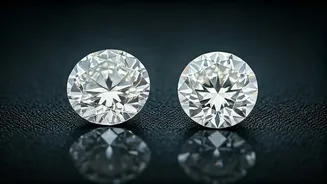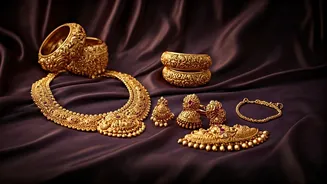The Sparkle Test
One of the initial ways to examine a diamond is through the sparkle test. Natural diamonds, forged over billions of years deep within the earth, often
exhibit a more complex and multifaceted brilliance. This is because they typically have a wider range of light dispersion due to their unique internal structures and the presence of natural imperfections. Lab-grown diamonds, while chemically identical, may sometimes lack this intricate internal structure, which can influence their overall sparkle. The sparkle of a diamond is a direct result of its cut, polish, and symmetry. Diamonds with excellent cuts will reflect more light and, consequently, appear brighter and more brilliant. Keep in mind that a diamond’s sparkle is affected by its cut quality and how the light interacts with the facets, not just whether it is natural or lab-grown.
Certification Matters
Obtaining certification is crucial when purchasing any diamond, whether natural or lab-grown. Reputable gemological laboratories, such as the Gemological Institute of America (GIA), provide detailed reports that assess a diamond's characteristics. These reports include details about the 4Cs: cut, clarity, color, and carat weight. They also identify the diamond’s origin. The certification ensures transparency and provides assurance regarding the diamond's quality. When considering lab-grown diamonds, the certification will state that they are lab-grown. Always request the certification to verify the diamond's details and confirm its authenticity. This is a non-negotiable step to protect your investment and guarantee peace of mind. Without proper documentation, it's challenging to ascertain a diamond’s true value and nature.
Price as a Clue
Price is another indicator that can help distinguish between natural and lab-grown diamonds. Generally, lab-grown diamonds tend to be priced lower than their natural counterparts of comparable size, cut, and clarity. This price difference stems from the difference in the production process and the resources required. Mining natural diamonds is an extensive process. Lab-grown diamonds are created in a controlled environment, resulting in lower production costs. However, price alone is not a definitive factor because the prices vary based on factors such as the retailer, diamond quality, and market conditions. Be wary of deals that appear too good to be true, as they may indicate a lower-quality diamond or a lack of transparency about its origins. Always consider the price in conjunction with other factors like certification and sparkle.
Ask the Questions
When purchasing a diamond, it's essential to ask your jeweler specific questions to understand what you're buying. Begin by inquiring about the diamond's origin: is it natural or lab-grown? Request to see the diamond's certification and review the details regarding the 4Cs. Inquire about the jeweler's return policy and warranty, particularly if you're unsure about the purchase. Ask about the diamond's cut, and request a detailed explanation of the grading. Discuss the diamond's history, if available, and any treatments it may have undergone. Finally, feel confident in asking your jeweler about the diamond's value. The answers will allow you to make an informed decision and ensure you're getting the diamond that aligns with your expectations and budget.
Making the Choice
Deciding between a natural and a lab-grown diamond involves assessing your priorities and preferences. If the symbolism and rarity of natural diamonds are important to you, and the budget permits, then a natural diamond may be the best choice. Alternatively, if budget is a key consideration and you still desire the brilliance of a diamond, then a lab-grown diamond is a fantastic option. Both types of diamonds are real diamonds, with the main difference being their origin. Both are capable of reflecting light and lasting a lifetime with proper care. Consider all factors—sparkle, certification, price, and your personal values—to make a decision that resonates with you. Ultimately, the choice should be based on what brings you the most satisfaction.











